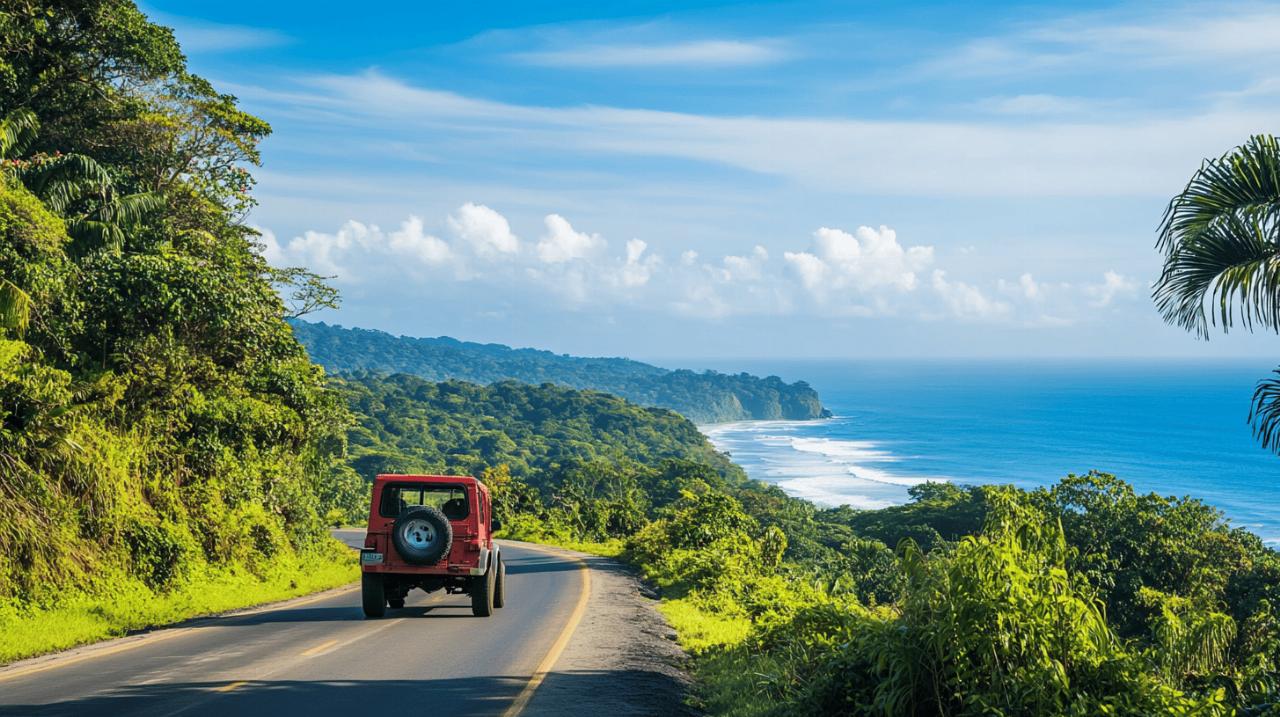
How to Choose the Perfect Vehicle for a Scenic Drive in Costa Rica
Embarking on a scenic drive through Costa Rica unveils extraordinary landscapes from misty cloud forests to stunning coastlines – selecting the right vehicle is crucial for making the most of this Central American paradise. The diverse terrain demands careful consideration when choosing transportation that balances comfort, capability, and cost-effectiveness for your journey.
Understanding costa rica's diverse terrain
Costa Rica boasts remarkably varied landscapes within a small geographic area. From coastal highways to challenging mountain passes, your choice of vehicle will significantly impact your travel experience. When planning your Costa Rican adventure, assessing the terrain of your intended destinations should be your first priority before making rental decisions.
Navigating mountainous regions and cloud forests
The mountainous interior of Costa Rica presents unique driving challenges with steep inclines, sharp curves, and sometimes unpredictable road conditions. Areas like Monteverde's cloud forests demand vehicles with adequate power and traction. For these regions, SUVs ($50-$100/day) provide a good balance of capability and comfort, while 4×4 vehicles ($70-$150/day) are ideal for the most rugged terrain. Many accommodations in hilly areas such as Monteverde, Rincón de la Vieja National Park, and the outskirts of Uvita can only be reached with four-wheel drive capabilities. You can find detailed guidance about navigating these mountainous zones on https://www.elrinconcunqueiru.com/ which offers comprehensive insights about transportation options throughout Costa Rica.
Beach access and coastal road considerations
Costa Rica's Pacific and Caribbean coastlines offer stunning driving routes, but vehicle requirements vary significantly by location. While major beach destinations like Tamarindo, Jaco, and Manuel Antonio are accessible with standard sedans ($30-$50/day), more remote coastal areas demand more capable transportation. The Nicoya Peninsula, particularly around Santa Teresa, often requires 4×4 vehicles due to unpaved roads and occasional water crossings. During the rainy season (May to November), coastal road conditions can deteriorate quickly, making ground clearance and all-wheel traction even more valuable. Coastal driving also means exposure to salt air and sometimes sand, so selecting a rental with appropriate undercoating protection is worthwhile.
Optimal vehicle types for costa rican adventures
Planning a scenic drive through Costa Rica requires careful consideration of your vehicle choice. Costa Rica's diverse landscape features everything from well-maintained coastal highways to challenging mountain passes and unpaved jungle roads. Making the right selection ensures you'll enjoy the country's natural beauty while staying safe and comfortable throughout your journey.
When traveling through Costa Rica, vehicle selection largely depends on your planned destinations. While sedans or compact cars ($20-50/day) work well around San José and paved routes, they quickly become impractical when venturing beyond urban areas. SUVs ($50-100/day) offer versatility for families and mixed terrain, while 4×4 vehicles ($70-150/day) become essential for remote locations and rougher terrain.
4×4 capabilities and ground clearance benefits
A 4×4 vehicle provides significant advantages when exploring Costa Rica's more remote regions. Many beautiful destinations like Monteverde, Santa Teresa, Nosara, and Rincón de la Vieja National Park have unpaved access roads that become challenging during the rainy season (May to November). The higher ground clearance of 4×4 vehicles allows safe navigation over obstacles, potholes, and occasional water crossings that would stop conventional cars.
Ground clearance becomes particularly valuable when accessing rural accommodations, especially Airbnbs situated in hillside locations. Many travelers report that what appeared to be an accessible location on a map turned into a steep, rocky ascent requiring 4×4 capabilities. While 4×4 vehicles aren't necessary for destinations like San José, Arenal/La Fortuna, Manuel Antonio, and Tamarindo, they provide peace of mind when exploring beyond these tourist hubs and give you freedom to discover hidden spots off the beaten path.
Fuel efficiency versus power requirements
Balancing fuel efficiency with necessary power presents a key consideration for Costa Rican road trips. Compact cars and sedans offer excellent fuel economy at 30-40 miles per gallon, making them cost-effective for paved routes. SUVs consume more fuel but provide the versatility many travelers need, while 4×4 vehicles use the most fuel yet deliver essential capabilities for challenging terrain.
Fuel costs impact your travel budget significantly, with full-service gas stations throughout the country accepting both dollars and colones. When planning longer routes through diverse terrains, the extra fuel consumption of powerful vehicles might be justified by their reliability and comfort. Budget-conscious travelers sticking to main tourist destinations might prefer hybrids or economy cars, while those venturing to multiple remote locations will find the higher fuel costs of 4x4s offset by the enhanced experiences they enable. Keep in mind that traffic around San José can be heavy, turning a 3-hour drive into 6 hours, which affects overall fuel consumption regardless of vehicle type.





